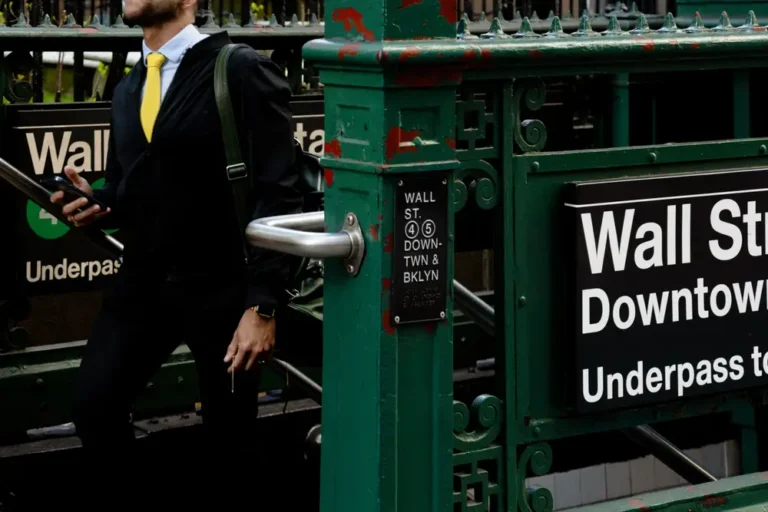I’m a 23-year-old entrepreneur who made $120,000 last year. Here’s how I built multiple income streams.

- Callie Jardine started a fitness blog in college, which she turned into a subscription-based app.
- She has several revenue streams, including her fitness app, brand partnerships, and YouTube adverts.
- Jardine shared how she built and retained subscribers for her subscription-based app, Sweaty Studio.
The following is an as-told-to essay based on a transcribed conversation with Callie Jardine, a 23-year-old from Palm Beach, Florida, about her app, Sweaty Studio. Insider has provided documentation to back up her earnings. *This section has been edited for length and clarity.
I’m a business owner who recently launched a Barre and Pilates app. It’s changed my life; I couldn’t ask for a more rewarding job.
I grew up in Canada, where I became interested in competitive figure skating.
I couldn’t skate because of a knee injury. My mother discovered a Barre class nearby, which is a low-impact exercise that combines Pilates, ballet, and yoga. I was optimistic that I would be able to continue training. When I went to college, I continued to figure skate for fun.
I began to struggle with my relationship with food and exercise in college. I went to the gym a lot and overdid it.
I started a fitness blog
Simultaneously, I trained as a Barre and Pilates instructor and began teaching classes as a side hustle.
Meeting people in their 40s and 50s who took my classes helped me reframe my approach to exercise. Exercise was about getting stronger or recovering from an injury for them, not about their body image.
“I’m Sweaty And I Know It,” my blog, was launched, and I wrote about exercise, health, recipes, and mental health. I’d post something about twice a week, but I wasn’t making any money.
I used TikTok, Instagram, and YouTube to build an email list
When we couldn’t hold classes in person in 2020, I moved my classes online. I concentrated on posting workouts tailored to what people needed help with.
Each free class drew between 50 and 100 people.
I planned TikTok live workouts and standard TikToks, with a link to my YouTube channel at the end of each clip. One of my first TikTok workouts went viral, and it was titled “Not in the mood to workout? Try this workout for unmotivated days.”
I started partnering with brands
I graduated from college in 2021 and began working a 9-to-5 in public relations while also filming workout videos on the side. Initially, I made very little money from my social-media profiles. I began earning money from brand deals on TikTok and Instagram after signing with a talent agency in 2021.
I only worked with brands whose products I was familiar with, or with deals that allowed me to test products first. I had collaborations with athleisure stores like Fabletics and Free People, where I wore their workout clothes in my videos or did workout classes with them.
I’d include a “call to action” in all of my TikTok and Instagram posts to direct people to my YouTube channel. I saw it as a funnel for my company. In exchange for their emails, I’d provide my audience with free guides. By the end of December 2021, I’d grown my email list to 1,000 subscribers.
I made money through YouTube ads
I began earning money from AdSense when I reached 1,000 subscribers on YouTube. In 2021, I made $3,600 from YouTube ads. Last year, I had 50,000 YouTube subscribers and earned $4,700 from advertisements. I now have 170,000 YouTube subscribers and have earned $16,700 from advertisements.
I parted ways with the talent agency in March 2022. I discovered that most brands would reach out to me, but for some brands that I really liked, I’d message them on Instagram or find an email contact to send them my rates. I was charging around $3,000 for one Instagram Reel and $1,000 for four to six photos for an Instagram Story at the time.
Launching a paid-for app was daunting
Too many YouTube workouts had clickbait headlines about losing weight, in my opinion. As someone who had previously struggled with an eating disorder, I wanted to create a Pilates and Barre app with empowering workouts.
I used Arketa, an app-creation service that costs $39 per month to store my workout videos and around $200 per month to build and maintain the app. For two months, I’d work on the app after work in the evenings.
I was afraid that no one would sign up because they were accustomed to my free workout classes.
I offered subscribers one free month
I began by giving subscribers one month of free app access, which automatically renewed at $10 per month unless they canceled.
When I launched Sweaty Studio in January 2022, I was blown away by the 500 people who signed up.
I was earning around $5,000 per month from the app, compared to $40,000 per year from my previous job in public relations. My social-media brand deals were also earning me up to $10,000 per month. I quit my job in February to focus on the app.
I began with a new year’s fitness challenge, then added monthly challenges and started teaching a weekly live class.
I increased my prices
Six months later, I raised the subscription price to $20 per month, but I gave my original subscribers the option of continuing at the $10 rate to encourage them to stick around.
This year, I introduced two subscription tiers: a basic tier for $20 and a premium tier for $50, which grants subscribers access to additional workouts, including our monthly programs.
When I increased the subscription, the membership rate slowed slightly, but it was well worth it. Last year, I earned six figures from my app, totaling $120,700 after business expenses.
I enjoy structuring my business with my energy levels and “cycle-syncing” in mind. I work full-time nine-to-five days when I have a launch coming up, but I also work two or four hours on other days.






